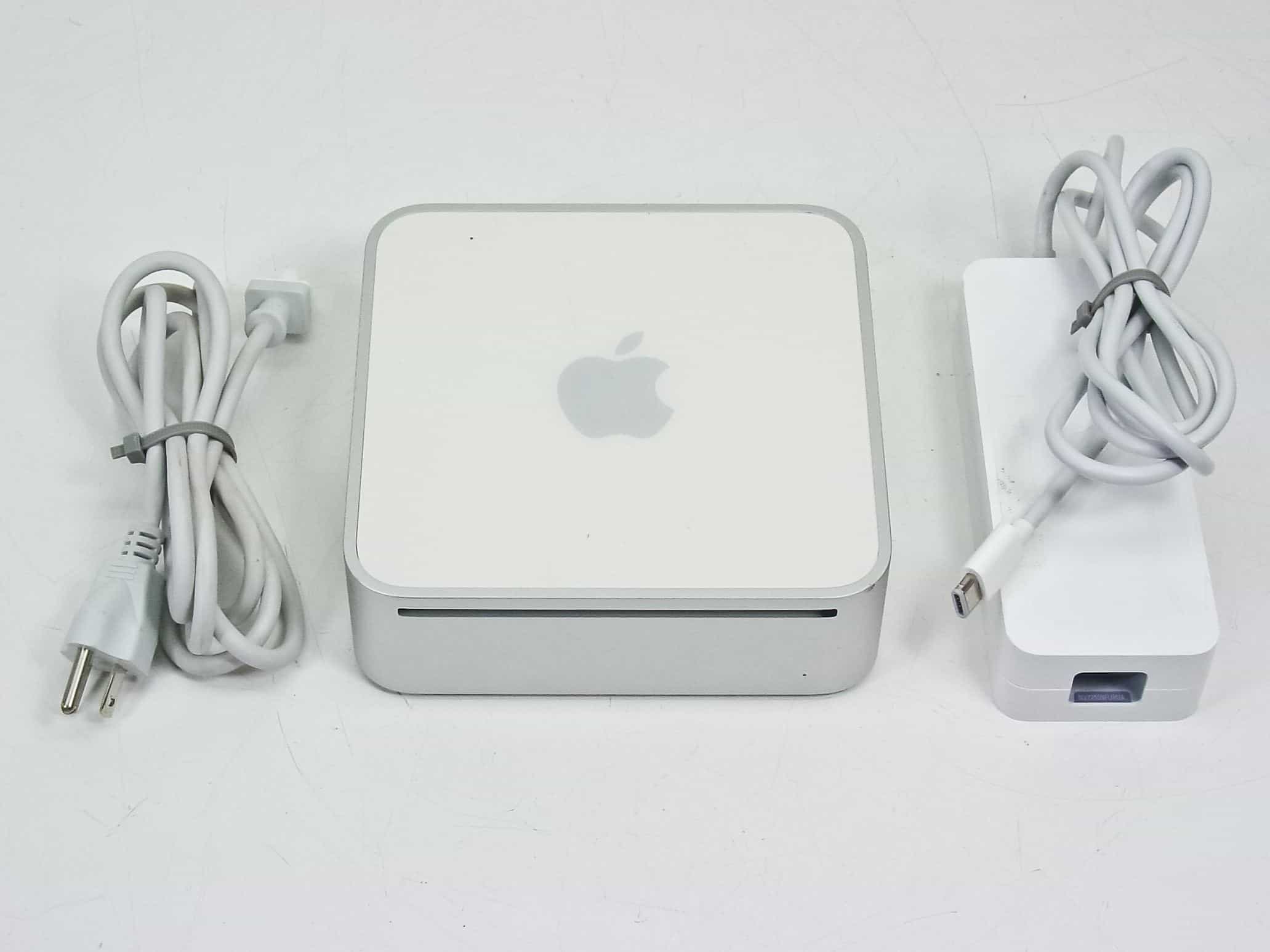 February 28, 2006: Apple introduces an upgraded Mac mini, an affordable computer powered by an Intel processor.
February 28, 2006: Apple introduces an upgraded Mac mini, an affordable computer powered by an Intel processor.
A “headless” Mac for entry-level users, it’s the third Apple computer to switch to Intel chips. Oh, and it makes one heckuva media player when plugged into a television set.
Mac mini: A headless Mac
When the first-generation Mac mini shipped in 2005, it became the first low-cost, consumer-level Mac desktop to ship without a display, keyboard or mouse since the iMac G3 signaled Apple’s return to dominance. (There was, of course, the beloved G4 Cube, which sank without a trace beforehand — largely due to its high price point.)
With subsequent back-to-back hits courtesy of the iBook laptop, the iPod music player and the iTunes Store, the time seemed right for Apple to lure Windows users to switch to Mac. Especially those who didn’t necessarily want to shell out big bucks for the then-current iMac G5.
This is where the “BYODKM” (bring your own display, keyboard and mouse) Mac mini came in. Customers who already owned the hardware necessary to operate a computer could save some money on their computer setups.
2006 Mac mini: More powerful (and more expensive) with Intel inside
The switch to more-powerful Intel chips for the early 2006 Mac mini jibed with Apple’s decision to move all Macs away from PowerPC processors. Some people raised their eyebrows at Apple co-founder Steve Jobs allying with such a big company. However, he saw Intel as the only chipmaker that showed the same sort of long-term vision as Apple.
The early 2006 Mac mini came with a bigger price tag. It cost $799, up from $499 to $699 for the previous G4 model. However, buyers got a much faster machine.
Apple claimed the new one ran about four times faster than the old G4 Mac mini, thanks to a 1.66 GHz CPU, 80GB hard drive and dual-layer SuperDrive. Apple packed all this hardware into an elegant 2.9-pound, 6.5-inch square aluminum body with a built-in speaker.
A media Mac that prefigured the Apple TV
In some ways, the Mac mini prefigured the Apple TV, which debuted a year later. While many people used the mini as a conventional Mac, others found that it worked as a superb entertainment center. It could connect to a television and act as an excellent media server, courtesy of Apple’s now-defunct Front Row media center software.
The Mac mini also utilized Apple’s Bonjour zero-configuration networking protocols. This allowed users to share music, photos and video over their local networks. That, in turn, helped cement the Mac mini as an important part of Apple’s digital hub strategy.
2006’s Intel Mac mini built on this media-friendly reputation by adding four USB ports on the back, as well as a new digital audio line in. It even came packaged with an Apple Remote for good measure — although there was sadly no TV tuner element.
Apple brought further upgrades to the Mac mini in subsequent years. When Apple silicon arrived in 2020, Apple launched a Mac mini powered by the blazing-fast M1 chip. The proprietary processor made that Mac mini substantially faster than Intel-based Macs in single-core tests. Apple released an even-faster version based on its M2 chip in 2023.
Still, more than a decade removed from the original Mac mini’s release, I still know people who use these computers as media players — particularly now that they can be cheaply picked up secondhand on eBay.
Did you own an Intel-based Mac mini in early 2006? Leave your comments below.


